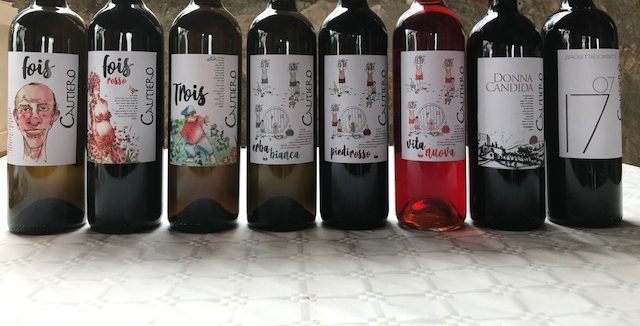Capocollo from Martina Franca
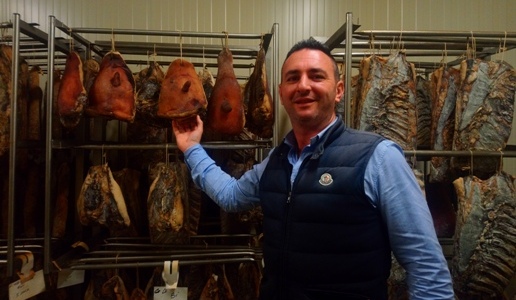
An historic cured meat that has lost some flavor due to intensive livestock raising. This is not the case at Salumi Martina Franca, where the livestock is free-range.
It is very hard to resist capocollo from Martina Franca, the art city in the Itria Valley. One slice leads to another and can cause addiction and make you eat it as if there is no tomorrow. The intense bouquet provokes immediate salivation and the sweetness of the meat on the palate is wrapping. The ancient art of curing meat, which was already appreciated in the 18th century, and the particular qualities of the microclimate and terroir make this salami unique.
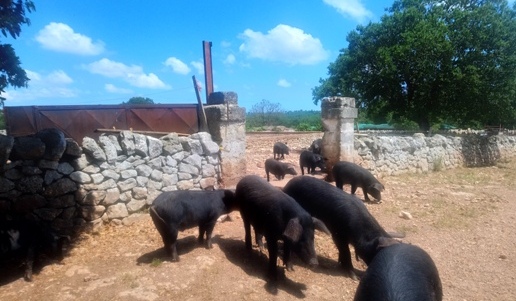
It doesn’t take much to recognize a good capocollo. What is important is to read the label, which is a food’s identity card, and the fewer the ingredients listed the higher the quality. Check the veins of fatbecause the thicker they are the more prestigious the cold cut it.
Copocollo is listed as a quality Italian Traditional Food Product (TFP) in the registry instituted by the Ministry for Agriculture, Food, Forestry and Tourism, in collaboration with Italian regions. This status is the green room for being classified as a European quality product: Guaranteed Traditional Specialty, Protected Geographic Indication and Protected Designation of Origin. The procedure to obtain these recognitions is in progress and for now it is recognized by the Slow Food Presidia, although seven producers have excluded themselves indefinitely until they can eliminate the use of nitrites and nitrates.
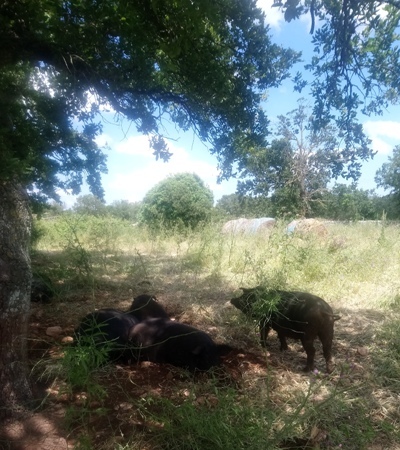
“In intensive raising, the local breeds, although more resistant, were less productive and were replaced by crossbreeds that were more productive but were less authentic, adaptable and resistant. If an animal is happy, the meat is tastier”, Franco Carriero said.
Salumi Martina Franca was founded in 2009 with the intention of producing in full respect of traditional methods, from the prime ingredient to the method of transformation. It is the only producer in the area to have its own expansive farm to raise native black pigs, some 400 at present. Most of the pork used comes from here.
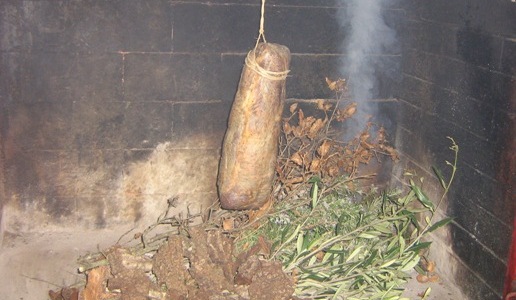 Experimentation to bring back this old method of livestock raising began in 2011 with the supervision of the National Research Council’s (CNR) Bari chapter of the Scientific Institute for Food Production (ISPA), Professor Carlo Cosentino of the University of Potenza and the Mario Viola Zootechnical Institute. The native black pigs were allowed to roam free and feed off the land following the farmer with whom they have a rapport. There are no fences and so there is always the risk of theft. Special measures were adopted for transportation and slaughter to reduce suffering, stress and fear. The company recently took part in a tender by the region to improve the quality and authenticity of traditional local products. It also launched a new project dubbed Innotipico. The microbial substances and yeast present in the laboratory were identified and categorized to be used as native starters used in the transformation of the product.
Experimentation to bring back this old method of livestock raising began in 2011 with the supervision of the National Research Council’s (CNR) Bari chapter of the Scientific Institute for Food Production (ISPA), Professor Carlo Cosentino of the University of Potenza and the Mario Viola Zootechnical Institute. The native black pigs were allowed to roam free and feed off the land following the farmer with whom they have a rapport. There are no fences and so there is always the risk of theft. Special measures were adopted for transportation and slaughter to reduce suffering, stress and fear. The company recently took part in a tender by the region to improve the quality and authenticity of traditional local products. It also launched a new project dubbed Innotipico. The microbial substances and yeast present in the laboratory were identified and categorized to be used as native starters used in the transformation of the product.
Aside from Capocollo, Salumi Martina Franca produces other specialties. For the more gluttonous, we suggest pagnottella which is made with the best cuts of black pigs and chopped with the tip of the knife. It is not a cold cut but is kneaded into a rounded shape and covered in Senatore Cappelli wheat bran and then aged. Last but not least is the bombetta di Martina Franca, a roulade of fresh meat with canestrato cheese, salt and pepper inside that weighs some 35g. It is a delight to cook at home on the grill or those at a typical Martina Franca butcher’s braceria.

 Italiano
Italiano








